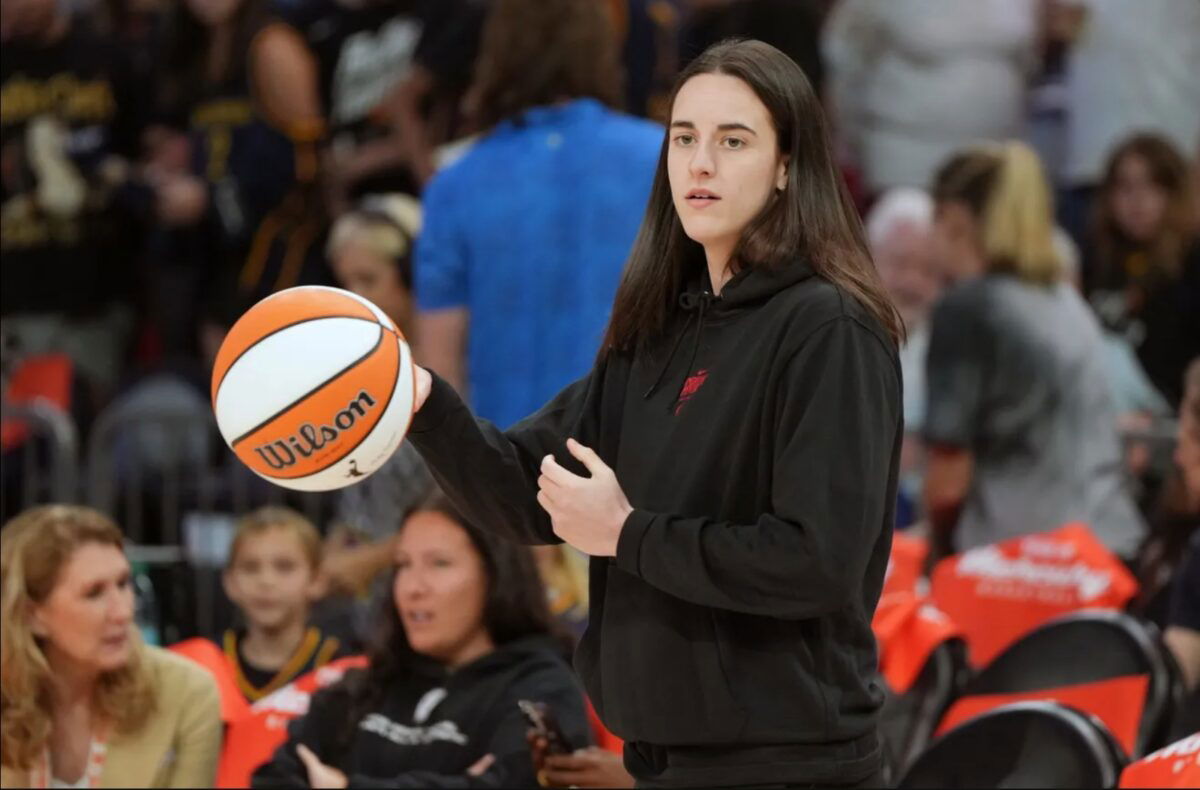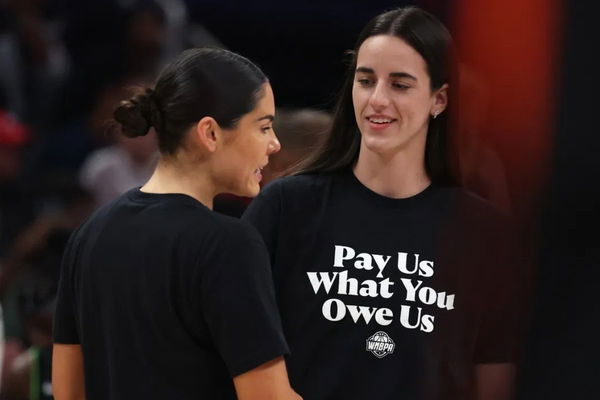
Imago
Rick Scuteri-Imagn Images

Imago
Rick Scuteri-Imagn Images
For what Caitlin Clark brings to the WNBA, she receives peanuts. In Clark’s rookie year, she brought in more than 25% of the WNBA’s revenue, according to valuation specialist Ryan Brewer. He later mentioned that Clark’s presence increased the overall value of the WNBA anywhere between $875 million and $1 billion+. Being a rookie, Clark will earn $338,056 in 4 years at the Fever. There is no doubt that she should earn significantly more than she currently does. However, the reality is not that straightforward, and Nneka Ogwumike has warned her player pool that there is a possibility that players may not receive everything they requested.
Watch What’s Trending Now!
“Everyone is not going to get everything that they want, but you can walk away content, or I guess accomplished, if everyone gets a little bit of what they asked for. You know, there’s no, there’s really virtually no situation where, you know, we can all say I got exactly what I wanted.” She said on the Bird’s Eye View live show.
To give more context, Bird and Ogwumike were discussing how negotiation, as the WNBPA president, works and the “art to compromise.” It’s an obvious thing many fans on the outside overlook: this is a back-and-forth between the league and the players. Neither party will get their way in the conclusion. So, according to Front Office Sports, the league isn’t giving the players $ 1 million demand for the supermax contract. Instead, they have offered $850,000. (Note: supermax is the maximum contract, with the current being $249,244)
ADVERTISEMENT
The players might have gone with that, but the league is keeping the same model as the current CBA. The players want a greater revenue share (currently ~9.4%). The proposed CBA will trigger the revenue sharing only if the league manages to meet certain revenue targets (the league has denied proposing the fixed income model, according to FOS). That could be unacceptable to the players, since the revenue sharing is a priority in the demands. In any case, even $850,000 is nowhere close to what the players theoretically deserve.
According to David Berri, a professor at Southern Utah University who studies sports economics, the top stars in the WNBA, like A’ja Wilson and Alyssa Thomas, should be paid $3 million. These are approximate calculations since the league doesn’t publish its finances, but an educated guess no less. “She (Caitlin Clark) would have, by my math, been paid upwards of $3 million according to her on-court productivity.” Berri wrote.

Imago
Credits: Imagn
Things are complex. The league’s business model does not allow such hefty paychecks. According to Bleacher Report, the costs to run the WNBA are 3-5 times higher than those incurred by the NBA for similar services, such as staff, facilities, and travel. Caitlin Clark and Co. will likely not get the amounts they ask for, but like Ogwumike further said, “But if there is a part of you that is represented in the agreement, then we got somewhere.” Currently, the two parties seem not even close to an agreement, and if the past is any indication, things will get a lot worse.
ADVERTISEMENT
ADVERTISEMENT
The WNBA Could Mirror The NBA Lockout Of 2011
The NBA had its last lockout and breakdown in its CBA negotiations in 2011. However, the situation was the exact opposite of the WNBA. Players in the NBA earned 57% of their BRI, too much for the league’s liking. They insisted on a 50-50 split, while the NBPA offered a reduction to 54.3%. The owners initiated a lockout in July 2011 as the talks went on behind the scenes. The lockout extended into the season as the start was delayed beyond October.
Players experienced financial difficulties and just wanted to get back to playing basketball. The likes of Kobe Bryant (did not actually play) and Deron Williams signed overseas contracts to supplement their income and just quench their thirst for competitive basketball. Many lower-profile stars who genuinely needed the money immediately went overseas. Compare that scenario to the WNBA.
The majority of the players don’t earn enough to survive the lockout. They don’t have as many brand deals as the NBA superstars or top WNBA stars like Caitlin Clark. So if there is even a hint of a potential lockout extending into the season, players could leave the WNBA in hordes, bringing the entire 2026 season into question. Then there is another prospect of a potential legal battle between the WNBA and the players.
ADVERTISEMENT

Imago
Aug 30, 2025; San Francisco, California, USA; Golden State Valkyries fans hold signs to “make the season long and the teams bigger”. And “pay them what you owe them” during the fourth quarter against the Washington Mystics at Chase Center. Mandatory Credit: Kelley L Cox-Imagn Images
In 2011, Carmelo Anthony, Kawhi Leonard, and several other players brought on an antitrust case after the decertification of the NBPA. “We’re about to go into the nuclear winter of the NBA.” League Commissioner David Stern had said at the time. The lawsuit argued the NBA was engaged in a group boycott in violation of antitrust law and in breach of player contracts, among other claims. Before things could get out of hand, the two sides fortunately reached a deal on a new CBA. It led to a delay of the 2011-12 NBA regular season, which was reduced from 82 to 66 games.
The WNBA can’t afford any of the above scenarios. The majority of their popularity is barely a year or two old. None of the new audience has been converted into hardcore fans yet. It will be a major loss for the players but even more so for the league. The fans’ support for their athletes is wholehearted, but the management, not so much. So Cathy Engelbert needs to repair her relations with the players quickly. Or Adam Silver might have to step in.
ADVERTISEMENT
ADVERTISEMENT
ADVERTISEMENT
ADVERTISEMENT

